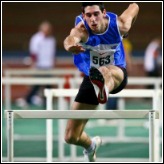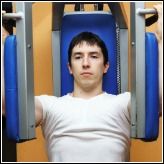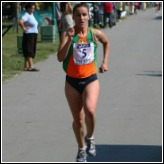The Best Plyometric Exercises

What are the best plyometric exercises? This question is rather like asking how long is a piece of string?
The plyometric question can only really be answered after first assessing the needs of the individual before you. For example:
- How old is the athlete?
- What are their current strength levels?
- Do they have a history of injuries which make them susceptible to certain types of activities?
- What sport or event are they involved in?
Only after making these important considerations should you then go on to design and implement a plyometric regime which best meets the specific needs of the individual.
There is a vast array of plyometric exercise and because of this, it will be impossible for me to go into depth on any of them in this article. What I will do therefore is to select one or two categories and then suggest the best exercises for the person who sits in that category. However, before we delve into the dark science of the best plyometric exercises, you should first acquaint yourself with how plyometric training works. This will give you the foundation to then implement the information you are about to receive here.
Teenagers, Young Adults and Novices
Due to the immature nature of the development of bone, ligament and tendons, we should always be careful of the intensity and types of loads which are placed on teenagers, young adults and anyone new to your sport. For that reason and also the intense nature of plyometric activities, careful consideration of the type of plyometric exercises suggested for this group is required.
Developing athletes are best served by low impact plyometric exercises. So, what are low impact plyometric exercises? Well if we view plyometric exercises as a continuum, at one end of the spectrum we have low impact exercises and at the other end we have high impact exercises.
As you might already know, these exercises can be some of the most intense training activities, therefore as the continuum suggests, low impact exercises would be more suited to beginners or young sport person than the higher impact exercises.
The original question was what are the best plyometric exercises? But it is not necessarily the exercise per se which makes a plyometric exercise high or low impact. Although this is true in some circumstances, it is not a universal law. Exercises can be:
- Two footed jumps
- Jumps with single leg (hops)
- Jumps with alternate legs (steps or bounds)
- Jumps over barriers
- Jumps from barriers
- Jumps for distance
- Jumps with short response (quick ground contact)
- Jumps with long response (slow ground contact)
- Jumps with momentum
- Jumps from static
Any combination of the above variables can place a plyometric exercises anywhere along the continuum. So, here are some examples of what I consider to be:
Low impact, best plyometric exercises
- Small two footed bounces in place
- Small two footed bounces going forwards (mini hurdles)
- Small two footed bounces going forwards in a Zig/Zag fashion
- Small two footed bounces, forward, sideward and backward
- Two footed tuck jumps in place
- Skipping take-offs, low intensity
- Skipping take-offs, for height
- Skipping take-offs, for distance
- Side hops
The Best Plyometric Exercises for Established Athletes
Once the athlete or sport person has been training for a while and their bodies have developed sufficiently to accept reasonably high load, they can now move on to a more traditional plyometric exercise regime.
Medium impact exercises
- Continuous two footed jumps going forwards for distances
- Single-leg tuck jumps in place
- Continuous single-leg jumps going forward (hops)
- Continuous alternate single leg jumps going forward (step/bounds)
- Two footed jumps going from box top to box top (20cm boxes)
- Continuous two footed forward jumps, into vertical tuck jumps
- Continuous hop/step combination jumps
- Two footed medium height hurdle jumps
So, as you can see the best plyometric exercises are ones which benefits the individual most. Young and novice athletes are best suited to what we call low impact exercises, while the more experienced or elite sports person will get the best results from high impact exercises.
Sign Up For The Latest Track And Field News And Improve Your Athletic Performance!
From "The Best Plyometric Exercises" Back To "Faster, Stronger, Better – Your Shortcut To Improved Athletic Performance"
Learn more about plyometric training







